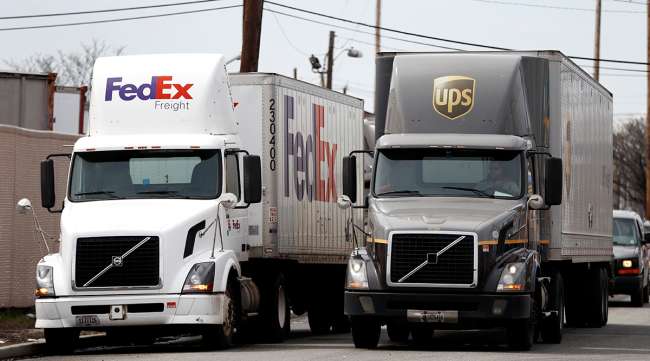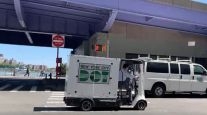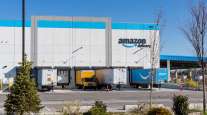Staff Reporter
Machines, Software May Be Best Bet to Conquer Final Mile, Experts Say

[Stay on top of transportation news: Get TTNews in your inbox.]
More than five years after a Christmas season in which UPS Inc. and Amazon.com offered refunds for late shipments, final-mile delivery still has plenty of kinks.
Blame consumers. They keep consuming, and now it’s easier — they simply use the internet.
With ubiquitous software on cellphones, tablets, computers and inside trucks, the whole process should be mapped out smoothly by now, or so it would seem. But e-commerce still throws curves at logistics firms, especially smaller trucking firms, experts told Transport Topics.

Larwig
“We’re all surprised by how many gaps there still are in visibility,” said Brian Larwig, executive for Trimble Maps, a company that offers software for routing.
Trimble Maps, formerly ALK Technologies, wants carriers to use more data-driven technology to manage the ever-changing final-mile delivery system. Trimble supplies software that can add “intelligent routing,” meaning drivers can deliver high volumes of packages in the quickest time.
And “more trucks” aren’t always the solution to perfect final-mile delivery, Larwig said. Rather, using technology to combine existing data, from routes to hours of service, can create a more perfect system to get freight and packages to customers, he said.
“The way [data] works together is our biggest strength,” Larwig said. “We differentiate by having all the tools work through the Trimble Maps platform.”
Another expert said all players, from the plant to the warehouse to the front door, need to be part of the improvements.

Beardslee
“You have to optimize end-to-end,” said Susan Beardslee, principal analyst for New York-based ABI Research. “From the manufacturer to the warehouse to final mile.”
Experts said software, artificial intelligence and predictive modeling still are underused.
The trucking industry needs to do more work on how to fill trucks before sending them out on the most efficient routes, said Mike Roeth, executive director of the North American Council for Freight Efficiency.
Roeth said demand for next-day delivery has made changes in mapping and routing more necessary.
“Historically, trucks could run the same route every day,” Roeth said. “Now we have a much bigger demand.”

Roeth
Logistics companies perhaps got their first lesson on how much e-commerce had changed the North American market during the Christmas season of 2013. UPS and Amazon offered refunds for late deliveries after that holiday.
UPS and FedEx Corp. were experts at final-mile, but e-commerce had surged so much, the industry had to scramble to work out the kinks.
Despite growing and better technologies, perfecting efficiency remains a big task, experts told TT. Compounding the problem are issues such as urban parking and breaks in visibility, Roeth said, adding the final-mile problems are ripe for a game-changing breakthrough. So far, a universal mapping breakthrough has not happened, and final-mile still has problems.
Beardslee said software has been good at reducing inefficiencies in longer hauls and medium-length hauls. But with trucking and logistics firms often operating with thin profit margins, every ounce of manpower and diesel counts, especially in the final-mile delivery. Final-mile often is the most troubled part of freight’s trip from the manufacturer through the warehouse to the customer.
“Right now, we’re still disjointed,” Beardslee said. “I think it’s in the early days, but I think it’s getting better.”
Beardslee said the data for such route optimization is so big, machine learning, or artificial intelligence, will have to help take up the task. Such AI is expensive but should eventually become affordable for smaller firms.
Regardless, consumer expectations will change how logistics and trucking firms perform end-to-end tasks, especially final-mile deliveries.
“The increasing velocity of goods through the supply chain is driving demand for real-time decision making and optimization,” Nick Finill, also a principal analyst at ABI Research, said in an ABI Research market data report issued in mid-June.
Experts said AI and machine learning-enabled solutions are becoming imperative for logistics and delivery firms as the market swells with activity and orders. Once seen as complex and expensive software, AI-assisted mapping and final-mile planning now are necessary to be a good final-mile operator, Roeth said.
“A lot of these software firms are not only for the big boys anymore,” he said.




